 Image search results - "hachimangu" Image search results - "hachimangu" |

Nagahama Hachimangu Shrine torii on New Year's Day. Nagahama's most popular shrine for New Year's worship (hatsumode). MAP
|
|

Path to shrine with stone lanterns, and cars.
|
|

Stone lanterns
|
|
|

The shrine grounds was filled with cars on New Year's Day. Apparently, the shrine has no parking lot.
|
|

Another entrance to the shrine
|
|
|
|

Haiden hall 拝殿
|
|

Ice sculpture of two rats. 2008 is the year of the rat.
|
|
|

Honden Hall 本殿
|
|

New Year's prayers amid snow.
|
|

Buying omikuji fortune paper
|
|

Shrine souvenirs
|
|

Votive tablet
|
|
|
|
|

Torii to Benzaiten Shrine
|
|

Benzaiten Shrine
|
|

Benzaiten Shrine
|
|

Torii to Tenmangu Shrine 天満宮
|
|

Tenmangu Shrine 天満宮
|
|

Omikuji tied on tree branches
|
|
|
|

Fire bringing warmth
|
|
|

Basho haiku monument
|
|

Musashino Hachimangu Shrine in Kichijoji. 武蔵野八幡宮
|
|

Musashino Hachimangu Shrine in Kichijoji. 武蔵野八幡宮
|
|

Musashino Hachimangu Shrine in Kichijoji. 武蔵野八幡宮
|
|

Musashino Hachimangu Shrine in Kichijoji.
|
|
|
|

Gate of Himure Hachimangu Shrine which holds the Sagicho Festival. 日牟禮八幡宮
|
|

Grounds of Himure Hachimangu Shrine which holds the Sagicho Matsuri. 日牟禮八幡宮
|
|

Praying at the main hall of Himure Hachimangu Shrine. 日牟禮八幡宮
|
|

Facing Eitai-dori road, the main entrance to Tomioka Hachimangu Shrine. The original shrine fronted the ocean, but landfills over the centuries have put the shrine further away from shore.
|
|

Stone marker for Tomioka Hachimangu Shrine.
|
|

Main O-torii gate. The shrine holds various ceremonies and events including an antique flea market. The Fukagawa Hachiman Festival is its most famous festival held annually. The Hon-matsuri full-scale version held every three years (2008, 2011, 2014, etc.
|
|
|
|
|
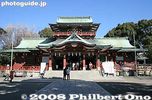
Tomioka Hachimangu Shrine, Honden worship hall. Koto-ku, Tokyo 富岡八幡宮 本殿
|
|

Tomioka Hachimangu Shrine, Honden worship hall
|
|

Inside Honden worship hall
|
|

Inside Honden worship hall
|
|

The shrine has close historical ties to sumo. Sumo has existed in Japan since at least the 8th century, but modern sumo began to take shape only during the Edo Period from the 17th to 19th centuries.
|
|

During the Edo Period, sumo became more organized and professional. It began with fund-raising sumo tournaments (kanjin-zumo) held at Shinto shrines and Buddhist temples to raise money for the shrine or temple's building construction and repair.
|
|

In 1684, government permission was granted for holding fund-raising sumo tourneys on the grounds of the Tomioka Hachimangu Shrine. Sumo tournaments were then held every year at the shrine.
|
|

Yokozuna Rikishi Monument (Yokozuna Rikishi-hi) at Tomioka Hachimangu Shrine, Koto Ward, Tokyo 横綱力士碑
|
|

Main stone of Yokozuna Rikishi Monument is inscribed with "Yokozuna Rikishi-hi" (横綱力士碑) which means Yokozuna Monument.
|
|

The left stone has a drawing of Yokozuna Shiranui.
|
|

The right stone shows Yokozuna Jimmaku Kyugoro.
|
|

Shiranui verses...
|
|

Jimmaku
|
|

On the right of the centerpiece stone is this newer stone (added in 1983) inscribed with the names of the most recent yokozuna.
|
|

The stone has three rows with seven names each.
|
|

In the top row, we can see from right to left: Asashio, Kashiwado, Taiho, Tochinoumi, Sadanoyama, Tamanoumi, and Kitanofuji. Inscribed are the ring name, hometown, and yokozuna promotion date.
|
|

In the middle row, from right to left: Kotozakura, Wajima, Kitanoumi, Wakanohana (II), Mienoumi, Chiyonofuji, and Takanosato.
|
|

On the bottom row, right to left: Futahaguro, Hokutoumi, Onokuni, Asahifuji, Akebono, Takanohana, and Wakanohana (III).
|
|

Since the front side of this stone is full, it continues on the back as you can see here.
|
|

From right to left: Musashimaru, Asashoryu, and Hakuho. Whenever a new yokozuna is promoted, a name inscription ceremony is held here.
|
|

The centerpiece stone is a 3.5-meter tall, 20-ton monument made in 1900 by the 12th yokozuna Jinmaku Kyugoro after collecting donations from business and political circles.
|
|

Behind the centerpiece stone are 45 yokozuna names (from the first yokozuna up to Wakanohana I) inscribed.
|
|

Names of the first to fifth yokozuna on the centerpiece stone. The first yokozuna was Akashi Shiganosuke. The Edo Period's golden age of sumo was during the time of the 4th yokozuna Tanikaze and 5th yokozuna Onogawa around 1789.
|
|

Names of yokozuna inscribed on the back of the centerpiece stone.
|
|

Names of yokozuna inscribed on the back of the centerpiece stone.
|
|

Names of yokozuna inscribed on the back of the centerpiece stone. On the extreme left is Raiden's name, a special case who was never promoted to Yokozuna, but was certainly Yokozuna material during the Edo Period..
|
|

At the time, only two ten-day tournaments were held annually in front of several thousand people. The sumo ring was located at the site of the present primary school next to the shrine.
|
|

During the years when tournaments were held at the shrine, professional sumo saw many important developments such as the incorporation of the yokozuna dohyo-iri (ring-entering ceremony), the establishment of the banzuke (sumo wrestler ranking sheet),
|
|

and the opening of sumo stables. Fukagawa (the area where the shrine is located) in effect became the birthplace of modern sumo.
|
|

The third stone awaits (still blank).
|
|

In 1791, the fund-raising sumo tournaments were moved to Eko-in temple in Ryogoku. In 1833, official sumo tournaments started at Eko-in temple. In 1909, the first and original Kokugikan sumo arena was subsequently built next to the temple.
|
|

The Yokozuna Rikishi Memorial Monument is also flanked by this smaller monument on the left. This is for sumo rikishi who acheived more than 50 consecutive wins.
|
|

This Rikishi Monument for Over 50 Consecutive Wins has 10 sides, and only five sides are inscribed with names. Which means only five rikishi have achieved more than 50 consecutive wins. One of them is Chiyonofuji.
|
|

Yokozuna Jimmaku Kyugoro
|
|

Although the shrine no longer hosts sumo tournaments, it has maintained close ties to sumo ever since. As of 2008, Koto Ward has several sumo stables (Taiho, Kitanoumi, Musashigawa, Kasugayama, Oshiogawa, Ajigawa, and Tomozuna).
|
|

Ozeki Rikishi Monument 大関力士碑
|
|

The Ozeki Rikishi Monument includes two stones inscribed with the names of Ozeki (those who never reached Yokozuna).
|
|
|

The most recent name inscribed is Kirishima (as of Feb. 2008).
|
|

Stone for handprints and footprints.
|
|
|

The Ozeki Monument also has a Strong Sekiwake Monument inscribed with the names of outstanding Sekiwake.
|
|

The names of the Strong Sekiwake includes Rikidozan whose name is highlighted in white here. Rikidozan later became a pro wrestler and got famous for his "karate chop." He was Korean, and his hometown is not inscribed here.
|
|

Portable Shrine Warehouse. Two giant mikoshi protable shrines are housed here.
|
|

Mikoshi
|
|
|
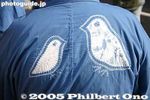
The shrine's happi coat has a design for the character "Hachi" (for Hachimangu) consisting of two pigeons. Pigeons are regarded as the messengers of the deity worshipped at Hachimangu shrines in Japan.
|
|

Statue of Ino Chukei (Tadataka) (1745-1818), Japan's first geographical surveyor and cartographer. He helped to produce the first accurate map of Japan. Monument built in Oct. 2001. 伊能忠敬
|
|

Ino lived in Fukagawa and before he went off to survey Japan, he always first came to this shrine and prayed. He had studied astronomy, geography, and mathematics.
|
|

He drew a very accurate coastline map of Japan and first used his own money to finance the project. Later, the government recognized the importance and accuracy of Ino's work and increased its support. He did all this while well past age 50.
|
|

Torii gate on the west side
|
|
|
|

Chikara-mochi Strongman's Monument
|
|

Torii gate on the east side
|
|

Kiba Kakunori Monument for square log rolling 角乗り碑
|
|

Kiba Kakunori Monument for square log rolling 角乗り碑
|
|
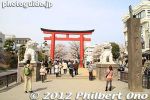
Torii on the Dankazura path to Tsurugaoka Hachimangu Shrine.
|
|
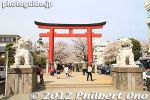
Dankazura path to Tsurugaoka Hachimangu Shrine.
|
|
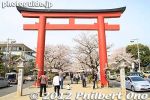
Dankazura path to Tsurugaoka Hachimangu Shrine.
|
|
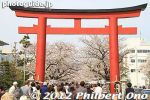
Dankazura path to Tsurugaoka Hachimangu Shrine.
|
|
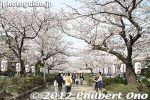
Dankazura path to Tsurugaoka Hachimangu Shrine is lined with many cherry trees which bloom in April (later than in Tokyo).
|
|
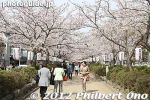
Cherry trees along the Dankazura path to Tsurugaoka Hachimangu Shrine.
|
|
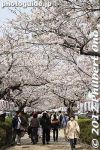
Cherry trees along the Dankazura path to Tsurugaoka Hachimangu Shrine.
|
|
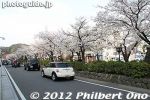
The Dankazura path to Tsurugaoka Hachimangu Shrine is in the middle of the busy Wakamiya Oji street.
|
|
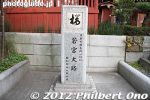
Marker indicating that Wakamiya Oji is one of Japan's 100 Famous Cherry Blossom Spots.
|
|

Another torii
|
|
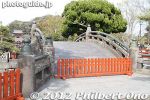
Arched bridge closed to the public.
|
|
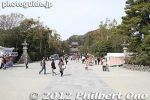
Path to Tsurugaoka Hachimangu Shrine.
|
|
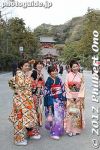
A few kimono ladies on their way to worship at Tsurugaoka Hachimangu Shrine, Kamakura.
|
|
|
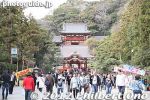
Tsurugaoka Hachimangu Shrine straight ahead.
|
|
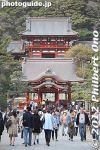
In the forefront is the Maiden sacred dance stage and the rear is the Hongu main worship hall.
|
|
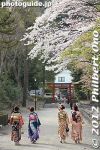
Kimono ladies and cherry blossoms.
|
|
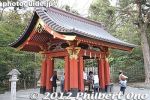
Fountain to cleanse yourself.
|
|
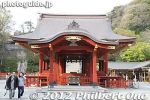
Mai-den sacred dance stage front view. 舞殿
|
|
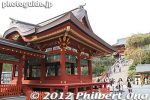
Mai-den sacred dance stage.
|
|
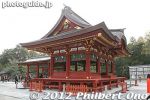
Mai-den sacred dance stage.
|
|
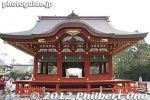
Mai-den sacred dance stage facing the Hongu. 舞殿
|
|

Stone steps going up to the Hongu main worship hall. 大石段
|
|

Gate to the Hongu.
|
|
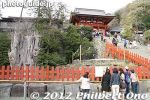
Next to the Stone Steps was a giant gingko tree which fell in a storm in 2010.
|
|
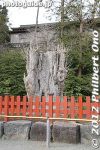
Only a tree stump remains of the gingko tree.giant gingko tree which fell in a storm in 2010.
|
|

About the fallen gingko tree.
|
|
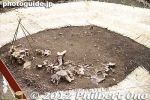
The original tree might still grow.
|
|
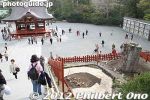
Spot where the gingko tree was.
|
|
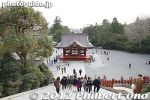
View of the Maiden from the Stone Steps.
|
|
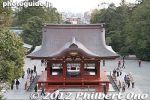
Maiden sacred dance stage.
|
|
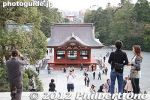
View from the top of the Stone Steps.
|
|
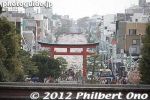
Dankazura path as seen from the top of the Stone Steps.
|
|
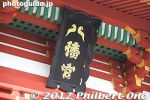
Hachimangu sing
|
|
|
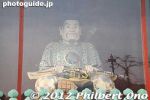
Statue in the gate.
|
|
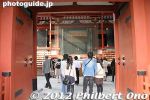
Hongu main hall.
|
|
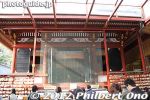
Hongu main worship hall at Tsurugaoka Hachimangu Shrine. The left side of the Hongu is a small museum. 本宮
|
|
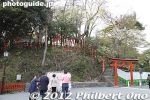
On the left of the Hongu is Maruyama Inari Shrine.
|
|
|
|
|
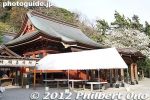
Wakamiya Shrine, the shrine's only building that is an Important Cultural Property.
|
|
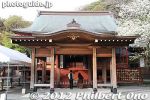
Wakamiya Shrine, Tsurugaoka Hachimangu Shrine's only building that is an Important Cultural Property. 若宮
|
|
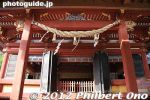
Wakamiya Shrine, Tsurugaoka Hachimangu Shrine's only building that is an Important Cultural Property. 若宮
|
|
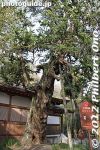
Tree planted in 1963, one of Kamakura's Natural Monuments.
|
|
|
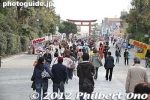
Path leaving the shrine.
|
|

Map of Tsurugaoka Hachimangu Shrine.
|
|
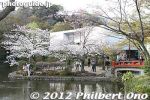
Genpei Pond in a Japanese garden full of cherry blossoms.
|
|
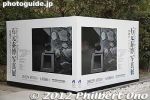
Museum of Modern Art, Kamakura
|
|
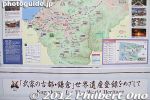
Kamakura is pushing for World Heritage Site status.
|
|

Genpei Pond in a Japanese garden full of cherry blossoms.
|
|
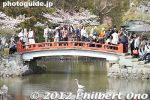
Bridge over Genpei Pond in a Japanese garden full of cherry blossoms.
|
|
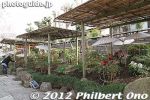
The shrine's Japanese garden includes a Peony Garden. A small admission is charged.
|
|
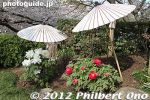
Peony garden at Tsurugaoka Hachimangu Shrine.
|
|
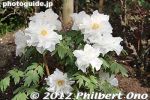
Exotic peonies at Tsurugaoka Hachimangu Shrine's Japanese garden.
|
|

Exotic peonies at Tsurugaoka Hachimangu Shrine's Japanese garden.
|
|
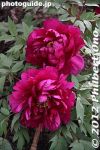
Exotic peonies at Tsurugaoka Hachimangu Shrine's Japanese garden.
|
|
|
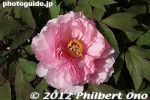
Exotic peonies at Tsurugaoka Hachimangu Shrine's Japanese garden.
|
|
|
|
|
|
|
|
|
|
|
|
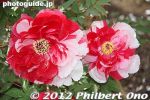
Red and white peonies.
|
|
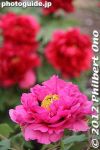
Peonies (botan in Japanese).
|
|
|
|
|

Rock Garden
|
|

About the Rock Garden
|
|
|
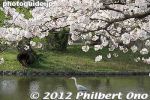
White heron and cherry blossoms.
|
|
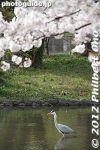
White heron and cherry blossoms.
|
|
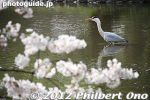
Grey heron and cherry blossoms.
|
|
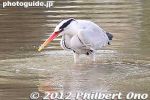
Heron finds a snack.
|
|
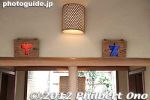
Restroom sign.
|
|

Rest house in the Japanese garden.
|
|
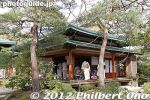
Tea ceremony house
|
|
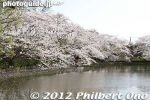
Cherry blossoms line the edge of Genpei Pond. 源平池
|
|
|
|
|
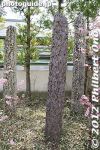
Petrified rocks
|
|
|
|
|
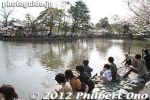
Small island in Genpei Pond has Benzaiten Shrine.
|
|
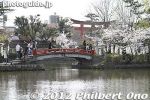
Bridge connects to a small island with Benzaiten Shrine.
|
|

Bridge connects to a small island with Benzaiten Shrine.
|
|
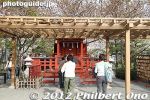
Benzaiten Shrine
|
|
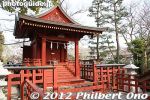
Benzaiten Shrine
|
|
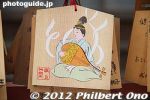
Goddess Benten
|
|
|

Genpei Pond and cherry blossoms.
|
|
|
|
|
|
|
|
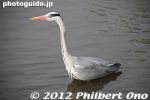
Grey heron
|
|
|
|
|